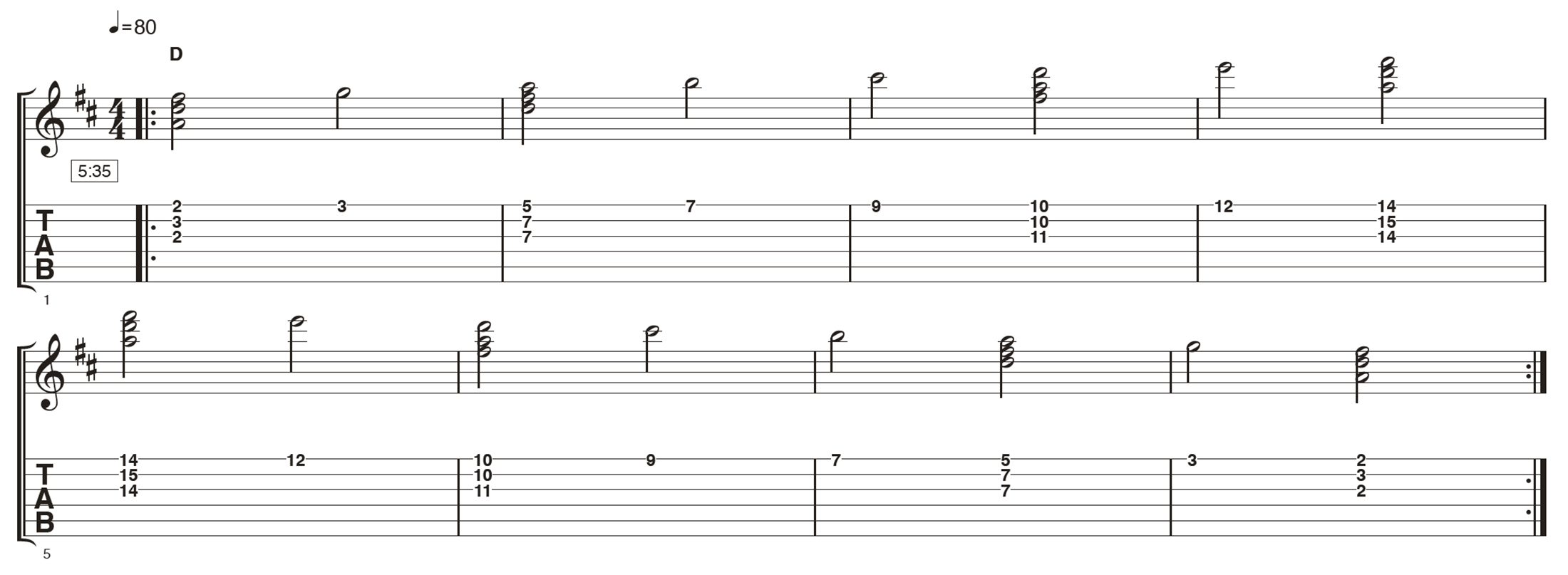
There is power in simplicity. Triads are the foundation of every beautiful song you’ve ever heard. If you can build and connect them, you’ll be able to learn songs more intuitively and open up a treasure trove of new creative ideas of your own.
Pickup Music’s lesson examines triads through the lens of the CAGED system – an essential tool for every guitarist, especially if you struggle with music theory or are more of a visual learner.
Triads are made of three intervals: the root, 3rd, and 5th. This three-note formula creates the backbone of musical harmony across all genres of Western music. Even the most complex jazz chords usually have a triad at their core.
In this lesson, we focus on major triads and their inversions (when the notes of a chord are rearranged). Instead of the usual ‘root, 3rd, 5th’ arrangement, the sequence can change to ‘3rd, 5th, root’ (the first inversion) or ‘5th, root, 3rd’ (the second inversion).
If you want your playing to be more versatile, and musical, there’s no better place to start .
D Major Chords
Before we get more deeply into the triads concept, take a look here at the full chord shapes they’re based on – all in D major.

And along the same lines, these are the notes of the D major scale across the neck.

Example 1. Up and down

We’re going to play through three triads in the key of D. The first shape should feel familiar – it’s a good old open D chord! Try out the other shapes and notice how each one is a fragment of a bigger barre chord (shown greyed-out here).

Starting at 1:30 in the video, Molly plays this example, cycling up and down through the triad shapes.
Example 2. Arpeggiating

We can turn triad shapes into an instant lead line simply by breaking them into individual notes (called an arpeggio). This is a great way to connect melodic ideas to chords and helps you internalise the sequence of notes in each inversion.
We’ll keep it nice and simple. Start on the second inversion (D shape) and pluck the third string, then the second, then the first. Once you can play it in time with each note ringing clearly, move up to the next position. Repeat this for each triad shape.
Example 3. Major scale connections

The terms ‘root, 3rd, and 5th’ refer to intervals within the seven notes of the major scale – and shown here are the notes of the D major scale played along the first string. Try playing the notes from low to high.

Here, we tie everything together by adding the major scale notes between our triad shapes. Make sure to visualise the triads and be mindful of each interval as you ascend the neck.

Bringing everything together, Molly finishes off by running through this exercise. Follow the link above to find both Molly’s video lesson and the backing track she plays over.







